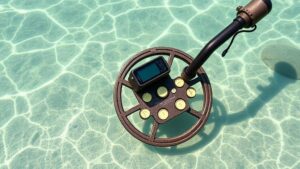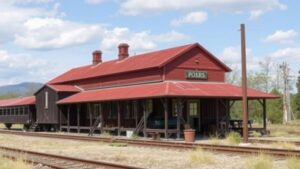Techniques for Locating Buried Silver in Historic Orchard Rows
Techniques for Locating Buried Silver in Historic Orchard Rows
The pursuit of buried treasure, particularly silver, has captivated the human imagination for centuries. In historic orchard rows, particularly those that date back to the 18th and 19th centuries, gardeners and those interested in archaeology can adopt specific techniques to locate such treasures. This article delves into effective methods for discovering buried silver within these unique and historically significant environments.
The Historical Context of Orchards
Understanding the historical context is essential to locating buried items. Orchards were not just agricultural sites; they served as social hubs where families gathered and traded, making them potential hiding places for valuables. For example, during the American Civil War, some families buried their silver to protect it from looters. The specific type of orchards relevant to silver searching includes:
- Colonial-era orchards
- Victorian gardens
- Orchards associated with prominent historical figures
By researching local history and records, one can identify likely locations for buried silver.
Utilizing Metal Detectors
One of the most effective tools for locating buried silver is a metal detector. e devices can detect metal objects buried a few inches to several feet below the surface, depending on the frequency and type of the detector.
When choosing a metal detector, focus on the following:
- Frequency: Higher frequencies detect smaller objects more effectively, which is crucial for locating silver coins or jewelry.
- Ground Balance Feature: This allows the detector to ignore mineralization in the soil, improving the chances of detecting buried metals.
Case studies demonstrate the effectiveness of metal detectors in orchards. For example, a modern metal detecting enthusiast uncovered a cache of Spanish silver coins dating back to the late 1700s in an orchard in upstate New York, illustrating the potential rewards of this method.
Utilizing Ground Penetrating Radar (GPR)
Ground Penetrating Radar (GPR) is a non-invasive technology that uses radar pulses to image the subsurface. This method can reveal buried metals without disturbing the soil, making it particularly useful in sensitive historic orchards.
GPR systems emit high-frequency radio waves into the ground, which reflect off different materials. benefits of using GPR include:
- Precision: GPR provides detailed imaging of subsurface materials, allowing for precise targeting.
- Non-location Specific: It can scan broad areas without disturbing the landscape, preserving the integrity of the orchard.
For example, researchers at an archaeological site in Pennsylvania employed GPR in a historic apple orchard, successfully identifying the locations of buried artifacts, some containing silver.
Soil Analysis Techniques
Soil analysis is another valuable method for identifying areas with higher potential for buried silver. Interesting findings can indicate when silver may have been buried there.
Techniques include:
- Magnetometry: This method detects subtle magnetic anomalies caused by metal objects, providing clues about potential buried silver.
- Soil Sampling: Analyzing soil samples for unusual compounds that could suggest previous human activity, like metal detritus from buried silver.
A notable case involved soil analysis in an old orchard in Massachusetts where elevated levels of lead were detected, indicating the previous presence of buried lead objects, which often correlate with silver finds.
Physical Search Techniques
While technology significantly aids the search, traditional physical search methods cannot be overlooked. Scanning the landscape for signs of older fruit tree patterns can lead to discoveries.
Techniques include:
- Sifting through topsoil: Carefully sifting through disturbed topsoil in rows may reveal hidden silver.
- Examining tree holes and roots: Silver may be buried under or near large root systems, especially in areas where trees have died or been uprooted.
For example, amateur treasure hunters have reported finding silver spoons and coins buried near the root systems of apple trees in abandoned orchards in New England.
Documenting and Reporting Findings
Each find, whether significant or minor, contributes to the collective knowledge of historic orchard sites. Documentation is crucial for future research and preservation efforts. This can include:
- Photographs of the find in situ
- A record of location, depth, and details about the items age and type
- Reporting finds to local historical societies or archaeological organizations
This not only protects the finds but also ensures that the data can aid future studies and preservation efforts. In Florida, treasure hunters have successfully collaborated with local museums to display their findings, further enlightening the public about the areas heritage.
Conclusion
Locating buried silver in historic orchard rows requires a combination of historical research, technological tools, and traditional techniques. By integrating methods such as metal detection, GPR, soil analysis, and diligent physical searching, treasure hunters and researchers can increase their chances of uncovering hidden silver artifacts. The important takeaway is that every search should be documented and shared, contributing to the wider narrative of our agricultural and social history.

